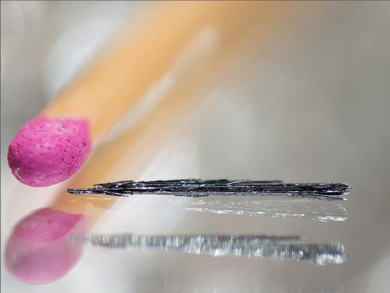Laszló Forró, Bálint Náfrádi, and colleagues, Ecole Polytechnique Fédérale de Lausanne (EPFL), Switzerland, have developed a new perovskite material, CH3NH3(Mn:Pb)I3. Its magnetic order can be rapidly changed without disrupting it due to heating. The material’s unique properties can be used to build next-generation hard drives
The crystal structure of this first ever described magnetic photoconductor combines the advantages of both ferromagnets, whose magnetic moments are aligned in a well-defined order, and photoconductors, where light illumination generates high density free conduction electrons. Low-power visible light illumination, e.g., a simple red LED much weaker than a laser pointer, is enough to disrupt, or “melt” the material’s magnetic order and generate a high density of travelling electrons. These can be freely and continuously tuned by changing the light’s intensity. The timescale for shifting the magnetic state in th material is very fast (quadrillionths of a second).
According to the researchers, their finding offers an alternative, very simple and efficient way of optical spin control, and opens an avenue for applications in low-power, light controlling magnetic devices.
Image: CH3NH3(Mn:Pb)I3 crystal ©: László Forró/EPFL
- Optically switched magnetism in photovoltaic perovskite CH3NH3(Mn:Pb)I3,
B. Náfrádi, P. Szirmai, M. Spina, H. Lee, O. V. Yazyev, A. Arakcheeva, D. Chernyshov, M. Gibert, L. Forró, E. Horváth,
Nature Communic. 2016.
DOI: 10.1038/ncomms13406




